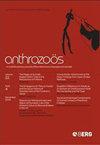看不见的动物:探索公共话语以理解驴子在英国的当代地位
IF 2.3
2区 农林科学
Q2 SOCIOLOGY
引用次数: 0
摘要
在西方文学和流行文化中,驴子的形象通常是负面的,它们被描绘成愚蠢、无能和坏脾气的动物。为了了解这些表征是否反映在当代对驴的理解中,我们从当代(面向公众的)新闻文章和(公共生产的)社交媒体上关于驴的帖子中构建了一个数字化的文本体(语料库),我们使用语料库语言学和话语分析中提取的定量和定性语言分析技术对其进行了分析。作为补充,我们与公众进行了焦点小组讨论,以收集对语言分析中确定的两个主要新闻文本的主要代表性模式的见解和反思。这种结合的方法在应用于动物福利主题方面是新颖的,它揭示了驴最常被描述为娱乐、嘲笑和困苦和痛苦的受害者(即需要帮助的动物)。我们认为,这样的表述可能会边缘化、模糊化和“隐形”真实的动物,导致对驴的持续误解和错误观念,这些误解和错误观念通过语言的使用进一步延续,并且很难被破坏和改变。这些发现对动物福利、教育计划和关于驴的公众交流具有重要意义。最后,我们强调了那些寻求改善驴的当代地位的人可能会挑战的不正确、无益和潜在破坏性陈述的领域。本文章由计算机程序翻译,如有差异,请以英文原文为准。
Invisible Animals: Exploring Public Discourses to Understand the Contemporary Status of Donkeys in Britain
Established representations of donkeys in western literature and popular culture have often been negative, portraying the animals as stupid, inept, and bad tempered. To understand whether such representations are reflected in contemporary understandings of donkeys, we constructed a digitized body of texts (a corpus) from contemporary (public-facing) news articles and (public-produced) social media posts about donkeys, which we analyzed using quantitative and qualitative language analysis techniques drawn from corpus linguistics and discourse analysis. We supplemented this with focus groups conducted with members of the public to gather insights and reflections on key patterns of representation in two key news texts identified in the linguistic analysis. This combined approach, which is novel in its application to animal welfare topics, revealed that donkeys are most commonly represented as figures of entertainment, ridicule, and as victims of hardship and suffering (i.e., animals in need). We argue that such representations can sideline, obscure and “invisibilize” the real animals, leading to persistent misunderstandings and false conceptions about donkeys, which are further perpetuated through language use and can be difficult to disrupt and change. These findings have important implications for animal welfare, education programs, and public communication about donkeys. Finally, we highlight areas where incorrect, unhelpful, and potentially damaging representations can be challenged by those seeking to improve the contemporary status of donkeys.
求助全文
通过发布文献求助,成功后即可免费获取论文全文。
去求助
来源期刊

Anthrozoos
农林科学-兽医学
CiteScore
3.40
自引率
18.80%
发文量
43
审稿时长
>36 weeks
期刊介绍:
A vital forum for academic dialogue on human-animal relations, Anthrozoös is a quarterly, peer-reviewed journal that has enjoyed a distinguished history as a pioneer in the field since its launch in 1987. The key premise of Anthrozoös is to address the characteristics and consequences of interactions and relationships between people and non-human animals across areas as varied as anthropology, ethology, medicine, psychology, veterinary medicine and zoology. Articles therefore cover the full range of human–animal relations, from their treatment in the arts and humanities, through to behavioral, biological, social and health sciences.
 求助内容:
求助内容: 应助结果提醒方式:
应助结果提醒方式:


